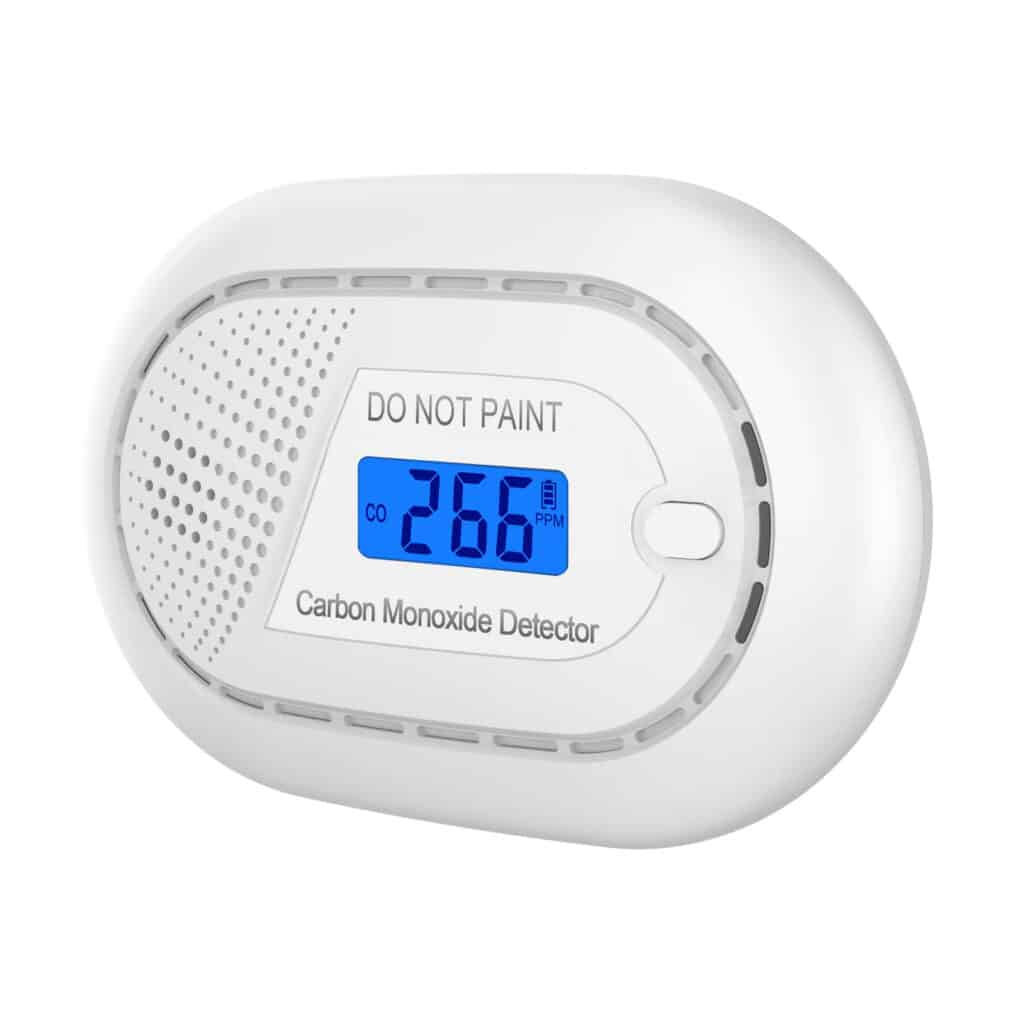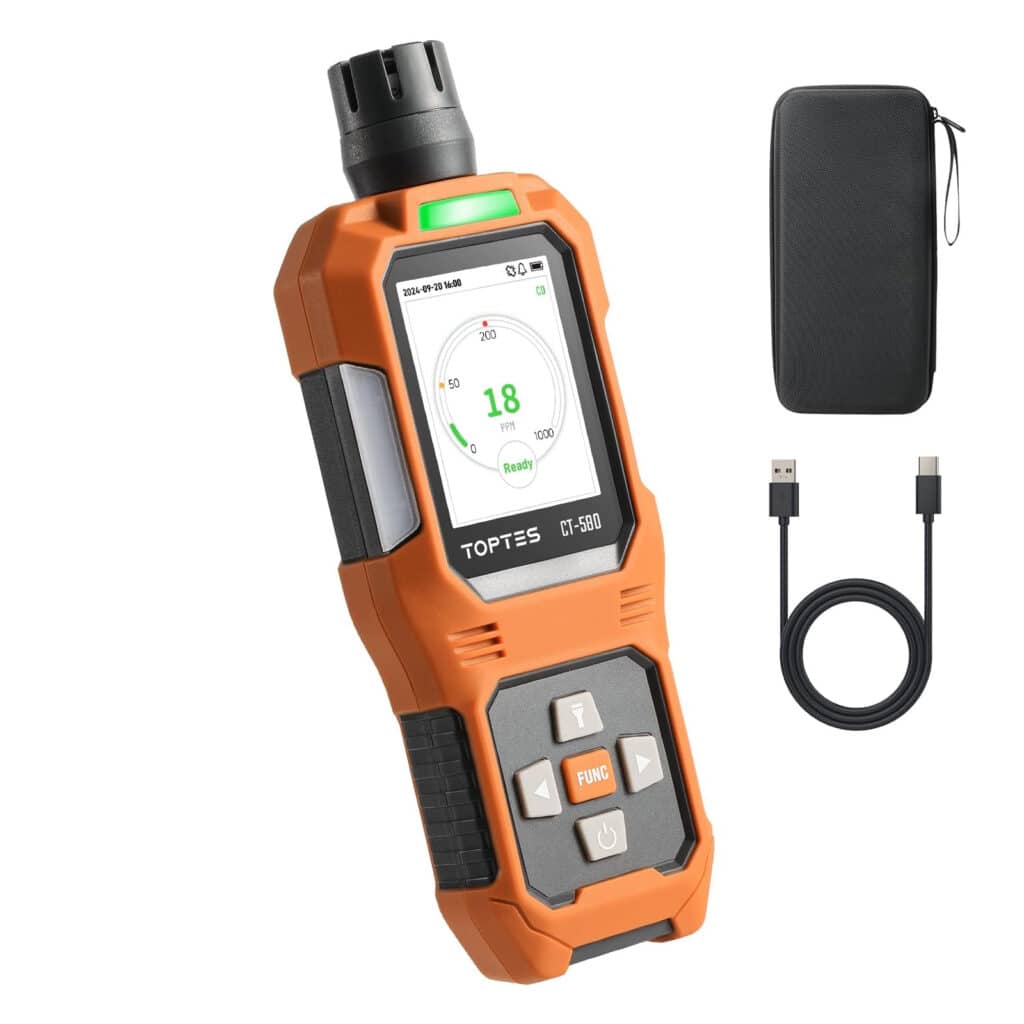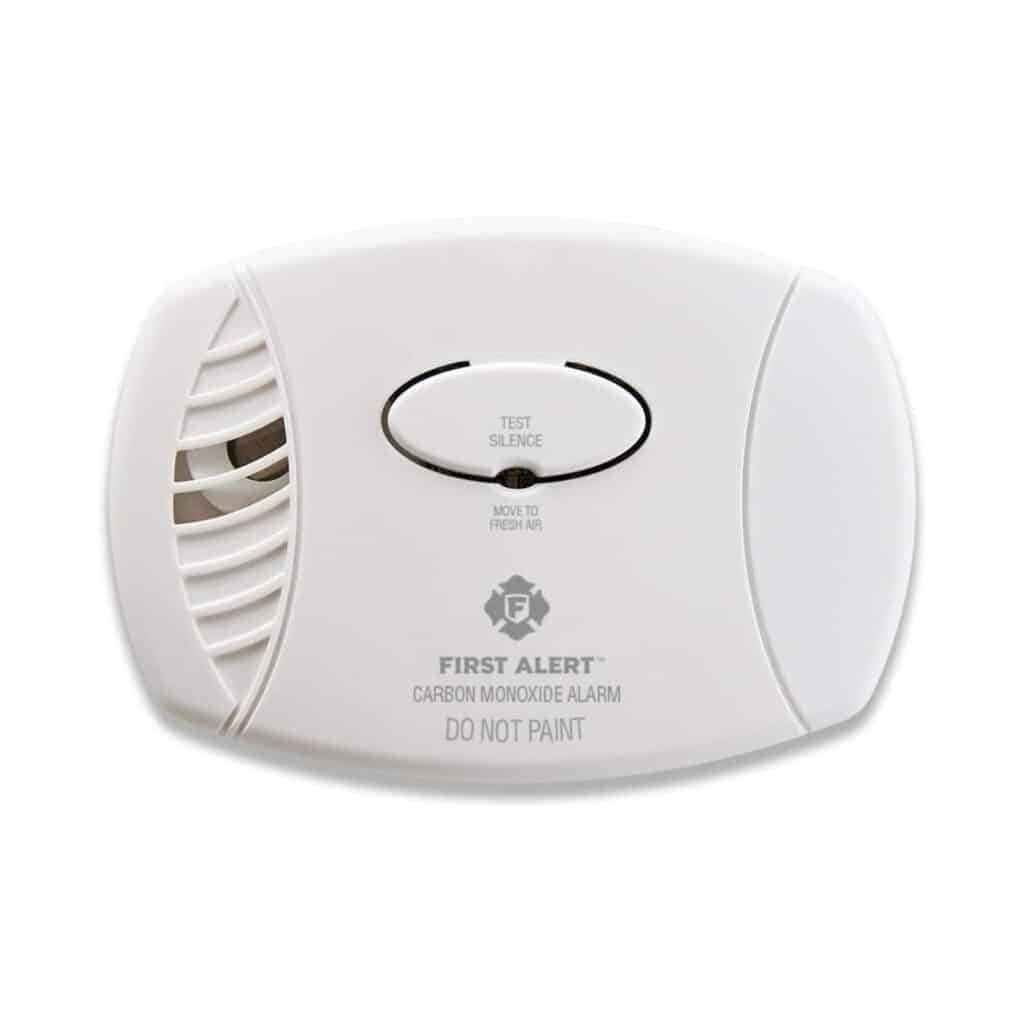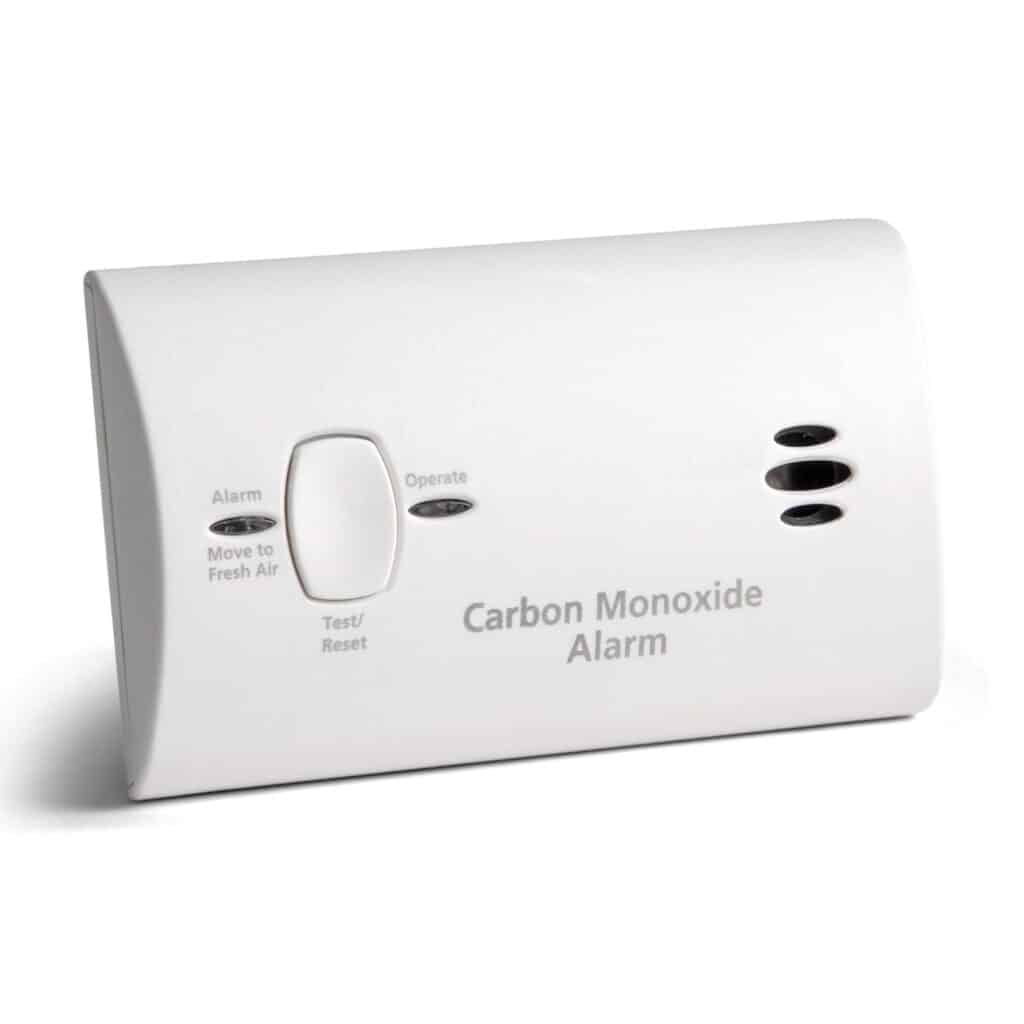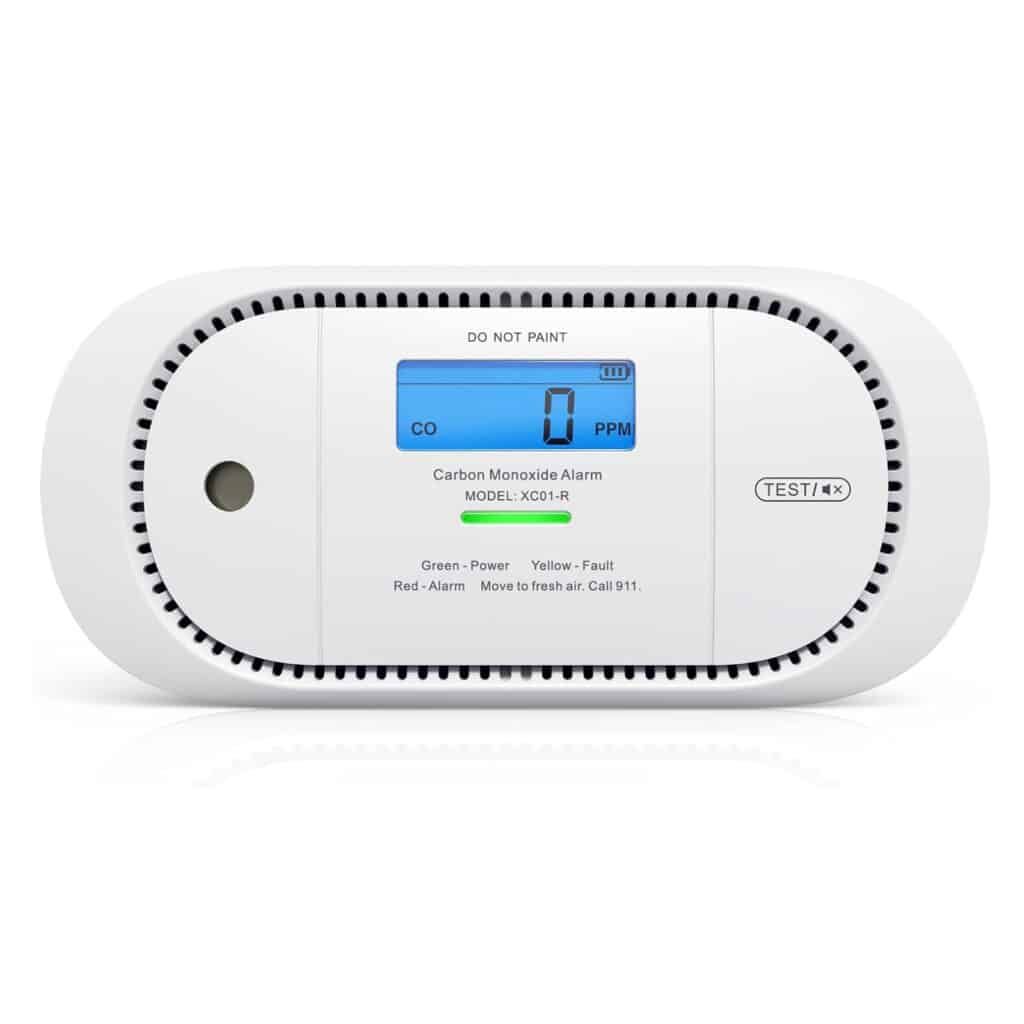Top 5 CO Detectors: Your Essential Guide to Home Safety in 2025

Noah Bishop - Key Analyst

Keeping your family safe from the invisible threat of carbon monoxide should be a top priority for every homeowner. A reliable CO detector is your first line of defense against this silent killer. 🏠
In this comprehensive guide, we’ll explore the best CO detectors available in 2025, focusing on features that matter most for your safety. From battery life to alarm volume, we’ve tested every aspect to bring you reliable recommendations. ⚡
Whether you’re looking for a smart CO detector or a simple but effective model, we’ve got you covered. Our expert team has analyzed dozens of options to bring you the top 5 choices that excel in reliability and performance. 🛡️
Let’s dive into our carefully selected picks that combine advanced technology with user-friendly features to keep your home safe.
Our Evaluation Standards
Sensor Accuracy & Sensitivity
Precision in detecting low-level CO concentration with minimal false alarms.
Alert System Effectiveness
Multiple notification methods including loud alarms, voice alerts, and smartphone integration.
Power Reliability
Backup power systems ensuring continuous protection during outages when risk is highest.
Smart Integration & Reporting
Connectivity with home systems, historical data tracking, and remote monitoring capabilities.
Rating
9.8 / 10
GENERAL VIEW
AirAnzel brings professional-grade carbon monoxide detection to your home with their advanced microprocessor-controlled sensor technology. 🔍
This detector stands out with its impressive 10-year battery life powered by a 3V lithium battery, ensuring long-term protection without frequent maintenance. The powerful 85dB alarm provides clear warnings that can be heard throughout your home. ⚡
The device features a sophisticated infrared photoelectric sensor and operates reliably in temperatures from 0-40°C with humidity tolerance of 15-95%. Its compact size of 120x75x17mm makes it suitable for any room placement. 🏠
After extensive testing and comparison, we can confidently say this is the best CO detector available in 2025, offering an perfect balance of advanced features and reliability.
Pros
- Advanced microprocessor-controlled monitoring system
- Exceptional 10-year battery lifespan
- Powerful 85dB alarm with LED indicators
- Professional-grade photoelectric sensor technology
- Compact and modern design aesthetic
- Wide temperature and humidity tolerance
- TUV EN50291-1:2018 compliance certification
- Simple one-button operation system
- Free shipping
Cons
- Frequently sold out due to overwhelming demand.
WRAP-UP
The AirAnzel CO Detector represents the pinnacle of home safety technology. With free shipping and 24/7 customer support, it’s an investment in your family’s safety that delivers peace of mind. The combination of advanced features, long battery life, and reliable performance makes it our top recommendation for 2025. EXPLORE NOW!
Pick #2
Rating
8.9 / 10
GENERAL VIEW
TOPTES presents sophisticated carbon monoxide monitoring technology incorporating comprehensive safety protocols. Their engineering approach emphasizes precision and reliability.
The implementation of high-precision electrochemical sensors ensures consistent measurement accuracy throughout the operational lifecycle. The integrated LCD interface provides simultaneous CO concentration and ambient temperature monitoring capabilities.
The distinctive three-tier alert protocol establishes graduated response mechanisms based on detected CO concentrations. The standardized 85dB alarm system ensures adequate notification coverage, while the illuminated display maintains visibility under suboptimal lighting conditions.
Automated diagnostic protocols perform regular system integrity verification, while the optimized form factor enables flexible deployment options. Operational parameters accommodate environmental variations from -10°C to 50°C.
Pros
- Advanced electrochemical detection systems
- Integrated LCD monitoring interface
- Multi-level alert mechanisms
- Environmental monitoring capabilities
- Automated diagnostic functionality
- Extended operational temperature range
- Streamlined installation protocols
Cons
- Premium price positioning
- 5-year battery replacement requirement
Pick #3
Rating
8.5 / 10
GENERAL VIEW
FIRST ALERT leverages extensive safety engineering experience in their carbon monoxide detection systems, delivering established reliability parameters within competitive cost structures.
The integration of electrochemical sensor technology maintains consistent detection accuracy throughout the operational period. The simplified interface incorporates diagnostic capabilities and operational status indicators, ensuring continuous monitoring effectiveness.
Implementation of extended battery architecture provides 7-year operational capacity without maintenance requirements. The standardized 85dB notification system meets current safety protocols, while the versatile mounting system accommodates various installation configurations.
The incorporation of preventative notification systems addresses both power supply status and operational lifecycle monitoring, ensuring continuous protection parameters.
Pros
- Proven electrochemical detection methodology
- Simplified operational interface
- Extended battery operational period
- Standard compliance certification
- Competitive cost structure
- Efficient installation protocols
Cons
- Absence of digital monitoring interface
- Limited installation configuration options
Pick #4
Rating
7.8 / 10
GENERAL VIEW
Kidde presents a cost-effective carbon monoxide detection solution while maintaining essential safety parameters and operational reliability.
The implementation of standardized sensor technology provides continuous monitoring capabilities. The fundamental interface design incorporates essential status indicators for power, alert, and system conditions.
Notable functionality includes peak concentration recording capabilities and integrated testing protocols. The system incorporates both maintenance notification features and operational status monitoring.
The device utilizes replaceable power sources and implements standard notification protocols for system maintenance requirements.
Pros
- Accessible price positioning
- Intuitive operational protocols
- Historical data retention capability
- Simplified maintenance procedures
- Optimized form factor
- Clear status indication systems
Cons
- Reduced battery operational period
- Limited functionality parameters
- Absence of digital interface
Pick #5
Rating
7.5 / 10
GENERAL VIEW
X-Sense implements contemporary monitoring technology with integrated connectivity capabilities, optimizing smart home integration potential.
The combination of electrochemical detection systems with digital connectivity enables advanced monitoring capabilities. The digital interface provides real-time concentration data with remote access functionality.
Distinguished by its smart notification architecture, the system enables mobile device integration for remote monitoring capabilities. Implementation of automated testing protocols ensures continuous operational verification.
The 5-year sensor lifecycle combined with replaceable power systems balances technological integration with practical functionality requirements.
Pros
- Integrated connectivity capabilities
- Mobile notification systems
- Digital monitoring interface
- Multiple installation options
- Automated diagnostic systems
- Contemporary design implementation
Cons
- Premium pricing structure
- Network dependency requirements
- Complex configuration protocols
❓WHAT IS A CO DETECTOR
A carbon monoxide detector represents a critical safety device engineered to identify and alert occupants to the presence of carbon monoxide gas concentrations in enclosed environments. These devices utilize sophisticated sensor technology to continuously monitor atmospheric conditions and provide early warning of potentially hazardous situations.
This essential safety equipment is particularly crucial for residential and commercial spaces utilizing fuel-burning appliances, attached garages, or any environment where carbon monoxide accumulation presents a potential risk. The technology serves as a primary preventive measure against carbon monoxide poisoning, offering continuous environmental monitoring and automated alert protocols.
⭐ Benefits of Using a CO Detector
- Provide early detection of dangerous CO levels
- Offer continuous 24/7 environmental monitoring capability
- Alert occupants before CO reaches harmful levels
- Integrate with existing home safety systems
- Function autonomously with minimal maintenance requirements
- Provide compliance with safety regulations and standards
- Offer peace of mind for property occupants
- Enhance overall home safety infrastructure
✔️ What to Look for When Choosing a CO Detector
- Sensor Technology: Advanced electrochemical sensors provide optimal detection accuracy and reliability. Select units utilizing current-generation sensor technology with demonstrated performance records.
- Power Source Configuration: Evaluate power source options including hardwired, battery-operated, or dual-power systems. Consider operational longevity and backup power capabilities.
- Certification Standards: Verify compliance with relevant safety standards (UL 2034, EN 50291) ensuring the device meets current regulatory requirements.
- Alert System Effectiveness: Assessment of alarm volume, visual indicators, and notification protocols. Ensure adequate coverage for the intended installation environment.
- Installation Requirements: Consider mounting options, placement requirements, and installation complexity. Evaluate compatibility with existing infrastructure.
- Maintenance Parameters: Examine battery life, sensor replacement intervals, and required maintenance procedures. Factor long-term operational costs into selection criteria.
❌ What To Avoid When Choosing a CO Detector
- Uncertified Products: Avoid devices lacking proper safety certifications or regulatory compliance documentation. Unauthorized manufacturers may not meet required safety standards.
- Expired Technology: Exercise caution with older model detectors or discontinued products. Sensor technology advances necessitate current-generation equipment selection.
- Inadequate Coverage Specifications: Prevent insufficient protection by avoiding detectors with coverage areas unsuitable for the intended installation environment. Consider space requirements carefully.
- Unreliable Power Configurations: Avoid systems lacking adequate power backup or requiring frequent battery replacement. Ensure continuous operational capability through proper power source selection.

Noah Bishop - Key Analyst
After years of rigorous testing, Noah has become a leading expert in useful gears. Explore his expert recommendations for innovative and practical devices in our prestigious Top 5 series.

